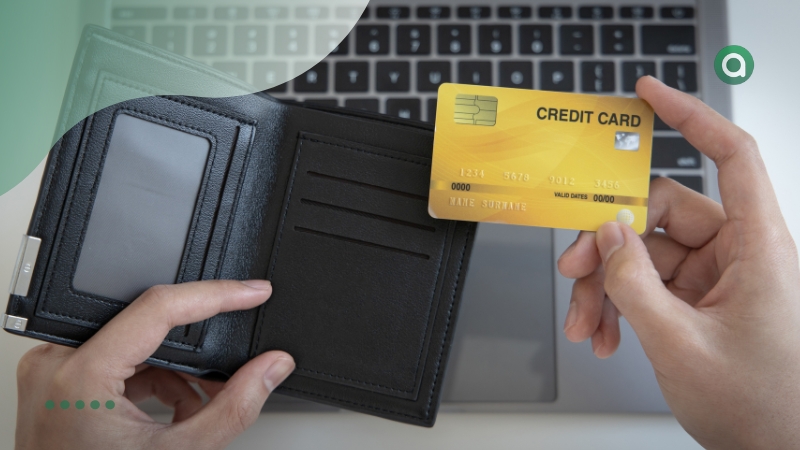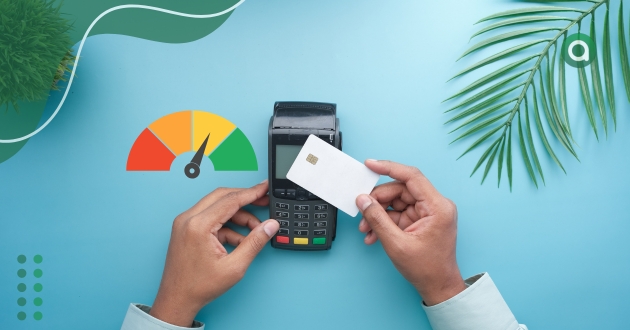Credit card for bad credit history is often seen as a lifeline for individuals who are trying to recover from past financial mistakes. When someone has faced defaults, late payments, or even bankruptcy, the traditional financial system tends to close its doors.
Regular credit cards become almost impossible to access, and this leaves many people stuck in a cycle where they cannot prove their financial responsibility again. A specialized card designed for those with a damaged score helps to break that cycle, offering both accessibility and a pathway to credit recovery.
Moreover, choosing this type of card is not just about convenience; it is about rebuilding trust. Credit is more than a number, it reflects a person’s financial reputation.
A credit card for bad credit history gives the opportunity to show banks and institutions that responsible habits can be formed, and mistakes from the past do not have to dictate the future. With every timely payment and balanced use, credit scores slowly rise, and new opportunities emerge.
Finally, it is important to understand that these cards are not perfect solutions. They often come with higher interest rates, lower credit limits, and strict terms. However, when used strategically, they become an essential tool for recovery.
Transitioning from financial hardship to stability requires patience and discipline. But with the right mindset, a credit card for bad credit history can be the starting point of a more secure and promising financial journey.
What Is a Credit card for bad credit history?
A credit card for bad credit history is not just another piece of plastic in your wallet, rather, it is a carefully designed financial tool that serves a very specific purpose. While traditional credit cards focus on rewarding clients with excellent credit profiles. These cards cater to individuals who need a second chance.
Consequently, instead of being judged only by past mistakes, cardholders can demonstrate their current ability to manage finances responsibly.
In practice, this type of card comes in two main forms: secured and unsecured. On the one hand, secured cards require a refundable deposit that acts as collateral. This deposit minimizes the risk for the lender while giving the user a fair opportunity to rebuild credit.
On the other hand, unsecured cards do not require such deposits. But they usually involve higher interest rates and stricter approval processes. Therefore, understanding the difference between the two is crucial before applying.
Furthermore, it is important to highlight that not all cards in this category are created equal. Some issuers offer basic versions with minimal benefits, while others include perks that resemble those of mainstream products.
For instance, even people with damaged credit might qualify for entry-level rewards programs. A good example is the Discover it Cash Back, which, although often associated with consumers with fair to good credit, also provides pathways for those rebuilding their score. This demonstrates that responsible financial products for bad credit can still come with tangible rewards.
Why Choose a Credit card for bad credit history?
- Rebuilding Credit: The most important reason is the ability to rebuild your credit profile. By making consistent, on-time payments, the card issuer reports positive activity to the major credit bureaus, slowly increasing your score.
- Accessibility: Even though your options are limited compared to traditional cards, having access to a credit card, even with low limits, can help cover emergencies, pay bills, or shop online where cards are often required.
- Security and Convenience: Unlike prepaid cards, a credit card for bad credit history offers fraud protection and sometimes additional benefits such as extended warranties or cashback, depending on the issuer.
Key Features You Should Look For
When applying for a credit card for bad credit history, not all offers are created equal. Comparing them carefully can save you money and frustration.
- Interest Rates (APR): Transitioning into the financial costs, the annual percentage rate (APR) is usually higher for individuals with poor credit. Therefore, always read the terms and calculate how much carrying a balance would cost.
- Fees: Look for application fees, annual fees, or hidden charges. While some cards are transparent, others may seem appealing but end up draining your wallet with extra costs.
- Reporting to Credit Bureaus: For the card to actually help improve your credit score. The issuer must report your activity to all three major credit bureaus. Without this, your responsible use will not reflect in your score.
- Rewards and Perks: Although rewards are not the primary purpose, some cards offer cashback on purchases. While not as generous as premium cards, these perks can add value over time.
Common Misconceptions
Many people hesitate to apply for a credit card for bad credit history because of misconceptions. Let’s clarify the most common ones.
First, some believe that using such a card will further harm their credit. In reality, responsible usage does the opposite, it helps restore creditworthiness. Second, many assume that secured cards are a waste because of the deposit requirement.
However, that deposit is refundable once you upgrade or close the account. Making it more of a safety measure than a cost. Finally, some think that these cards never evolve. On the contrary, with time and positive history, many issuers offer to graduate you to an unsecured card with better terms.
How to Use a Credit card for bad credit history Wisely

Transitioning from theory to practice, the real challenge is not getting approved but managing the card effectively. Here are some strategies.
- Pay on Time: This is the single most critical step. Late payments will damage your credit further, while consistent punctual payments will gradually restore it.
- Keep Balances Low: Even if your credit limit is modest, avoid maxing it out. A good rule of thumb is to keep your credit utilization ratio below 30%.
- Avoid Unnecessary Fees: Paying annual fees may be unavoidable, but avoid penalties such as late fees or over-limit charges by tracking your spending.
- Treat It as a Tool, Not Free Money: A credit card for bad credit history should be seen as a stepping-stone, not an excuse for reckless spending. Use it to cover small, manageable expenses and pay them off promptly.
The Pros and Cons
Advantages
The main advantages include credit rebuilding, financial accessibility, and fraud protection. Moreover, after a period of responsible use, many cardholders find themselves eligible for better offers, including higher limits and rewards programs.
Disadvantages
On the downside, these cards often have higher interest rates and fees. Some also come with very low limits, which can feel restrictive. Furthermore, approval is not guaranteed, especially for unsecured cards, meaning rejection could further discourage applicants.
Transitioning Toward Better Credit
The ultimate goal of a credit card for bad credit history is not to remain in the same category forever but to transition into mainstream credit opportunities. Once your score improves, you can apply for cards with lower rates, better rewards, and more generous limits.
For instance, many financial institutions allow you to “graduate” from a secured card to an unsecured one after demonstrating consistent payment behavior for 12 to 18 months. This upgrade is not only financially beneficial but also psychologically rewarding, signaling that your efforts have paid off.
Real-World Example
Consider the case of someone with a history of missed payments due to job loss. After stabilizing their income, they apply for a secured credit card for bad credit history with a $300 deposit. They use the card for essential purchases like groceries and utilities, paying it off in full every month.
After one year, their score increases significantly, and the issuer offers them an unsecured card with a higher limit. This progression highlights the effectiveness of responsible card usage in rebuilding trust with lenders.
Alternatives to a Credit card for bad credit history
If you are not ready to commit to a credit card, there are alternatives to consider.
- Credit-builder loans: Small installment loans designed specifically to improve credit.
- Authorized user status: Becoming an authorized user on a family member’s or friend’s account can help improve your score if they have a strong history.
- Debit and prepaid cards: While they do not directly impact credit scores, they can help you manage money responsibly while preparing to re-enter the credit world.
However, none of these alternatives fully replace the benefits of a credit card for bad credit history, especially when it comes to building independent creditworthiness.
Conclusion
In conclusion, a credit card for bad credit history represents much more than just a financial instrument, it symbolizes a chance for redemption and growth. Although it may begin with modest limits and higher fees, its long-term value lies in the opportunity it provides to reshape one’s financial identity.
Over time, through consistent, on-time payments and prudent usage, cardholders can demonstrate to lenders that they are capable of managing credit responsibly.
Moreover, it is important to recognize that this journey requires patience. Transitioning from a damaged credit score to a more stable one does not happen overnight. Small steps, like paying your balance in full whenever possible or keeping your utilization ratio low, contribute significantly to improving your credit report. Step by step, the cardholder moves from restriction toward greater financial autonomy.
Additionally, access to reliable information is essential in making informed decisions. For trustworthy guidance on credit cards, consumer rights, and financial protection, the Federal Trade Commission maintains a comprehensive resource called “Credit and Debt”, which offers practical advice on using credit wisely and avoiding scams FTC – Credit and Debt Consumer Advice.
Therefore, the message is clear: a credit card for bad credit history is not an admission of defeat, but rather a powerful tool for transformation. With discipline, determination, and the right educational resources, what once seemed like an insurmountable barrier can become the very foundation of a stronger, healthier financial future.





